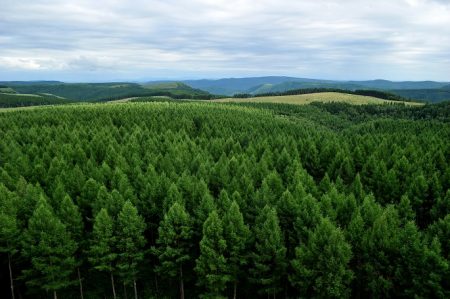February 19, 2019 – A study that appeared in October of 2017, in Science, suggested that mature tropical forests like those in the Amazon and Congo River basins are net carbon emitters. That means they give up carbon to the atmosphere more than they take in. Using 12 years of satellite data studying above-ground carbon density, lead researchers to conclude that these old-growth forests were, in fact, adding CO2 to the atmosphere rather than reducing it.
These conclusions contradicted commonly held views by climatologists, that equatorial forest carbon sinks are generally negative emitters. But it turns out the oldest tropical forests on our planet can only absorb so much carbon before starting to give some of it back through vegetation decay and other natural processes.
On the other hand, new research out of the Birmingham Institute of Forest Research at the University of Birmingham in the United Kingdom concludes that young forests are far more significant as terrestrial carbon sinks. And by young forest, the Birmingham researchers define these as having tree ages of less than 140 years on average. That means forest areas that have been harvested in the past or cleared by fire are better at sequestering carbon than any other natural processes other than the ocean, the world’s largest carbon sink.
The research on carbon uptake of forests between 2001 and 2010 shows that regrowing forests absorb carbon because of two reasons: the fertilization effect, and the young effect.
What is the fertilization effect?
The increasing amounts of carbon dioxide (CO2) in the atmosphere is having a greening effect on the planet, increasing the amount of photosynthesis occurring in plants. That contributes to carbon uptake.
What is the young effect?
New forests take up carbon much faster than older ones because young trees need the carbon to grow. The age effect accounts for 25% of all CO2 absorbed by the Earth’s forests.
Where are the young forests?
Not in the tropics, but in temperate to high-latitude climates. We are talking for the most part about the forests of Scandinavia, Russia, Canada, China, and the United States where a combination of farm abandonment, forestry, and wildfires have led to reforestation programs to renew the biomass through new tree growth. The added bonus beyond CO2 uptake derived from young forests is their ability to store water and as a result, alter the climate within their proximity contributing to cooler daytime high temperatures. If you don’t believe this to be true, just sit under a shady tree on a hot summer day.
So why don’t we do more forestry and reforestation in older tropical forests?
These equatorial forests play a significant role in our Earth’s atmospheric dynamics. For example, the atmospheric water vapour generated by the Amazon basin is described as a river in the sky which brings the monsoons to the Indian subcontinent every year. Wholesale cutting of these forests could have unintended consequences. As it is tropical rainforest deforestation, largely through burning, is contributing significant carbon to the atmosphere. When the forests are gone, they are replaced by single-crop plantations for growing sugar cane or harvesting oil from palm trees, or by ranches where beef cattle are raised. And where reforestation projects occur in equatorial forests, the species of trees don’t grow as fast as their counterparts in temperate climates.
One of those who worked on the Birmingham study, Tom Pugh, a professor in the School of Geography, Earth and Environmental Sciences, in a press release is quoted saying “It’s important to get a clear sense of where and why this carbon uptake is happening, because this helps us to make targeted and informed decisions about forest management.”
One of the challenges faced by reforestation programs in young forest areas is the tendency to plant a single species of tree. When my wife and I visited Portugal last fall we saw the folly of such a strategy. Portugal’s forestry industry has reforested and replanted much of the country with Eucalyptus trees. Why? Because they are fast growing and within three to five years can be harvested. The unintended consequences of this strategy became apparent as we toured areas where entire forests had gone up in flame because Eucalyptus turns out to be inflammable in a big way.















